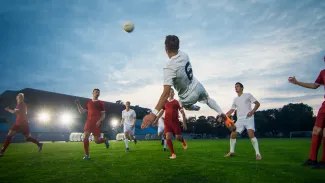
In the picturesque setting of Loch Lomond, Scotland, the International Football Association Board (IFAB) held its annual general meeting on 2 March 2024.
A significant decision was taken: the permanent incorporation of concussion substitutes into the Laws of the Game. This change, allowing additional substitutes to manage suspected concussions, marks a crucial development in sports concussion management and reflects the growing body of medical research advocating for player safety.
It also reflects a wider trend of implementation of health and safety measures by sporting governing bodies.
We previously looked at the role of governing bodies in managing concussions in an article written by Matthew Phillip. This article looks at the latest developments in tackling health and safety in sport and explores the ongoing practical and legal challenges faced by sporting governing bodies and individuals alike.
Recent health and safety developments in sport
Recent scientific studies in football have found that players who head the ball more frequently have a greater risk of reduced cognitive performance.
Columbia University’s two-year study of football players in New York found that those who headed the ball frequently, around 1,400 or more times in two years, showed significant changes in brain structure.
This change in the brain structure may be part of the early stages of future neurodegenerative disorders.
Governing bodies across the UK have recognised these risks.
The Scottish Football Association (SFA) now prohibits heading the ball the day before and after a game for professional footballers, with a complete ban on heading in training for players under the age of 12. Similarly, the English Football Association (FA) has introduced a trial ban on deliberate heading in matches for players aged 12 and under, with hopes of making it a permanent rule in season 2024/25 with IFAB’s backing.
However, these changes do not come without additional challenges. Critics argue that such bans may encourage dangerous play by players who use their feet (instead of their heads) in high ball situations.
On the other hand, supporters highlight the potential long-term benefits for cognitive performance and skill development. Balancing these factors against a backdrop of growing medical evidence poses a major challenge for governing bodies.
The Rugby Football Union (RFU), Welsh Rugby Union (WRU) and World Rugby face allegations of failing to protect players from permanent injury.
World cup winner Steve Thompson, along with over 450 players, has raised a legal claim against the rugby authorities for negligence. Steve Thompson has suffered from early-onset dementia and memory loss thought to have been caused by repeated head injuries during his playing career.
A similar case was faced by the National Football League (NFL) in the United States, where it is reported that nearly $1.2 billion has been paid to over 1,600 former American football players and their families.
Concussion injuries are not the only risk factor in sport.
The sports world was recently shaken by the tragic death of Adam Johnson, a professional hockey player, in the Elite Ice Hockey League in England. A collision with an opponent and a subsequent neck injury from the other player’s ice skate led to England Ice Hockey mandating neck guards in all games below the Elite League from January 2024.
These incidents highlight the critical risks in sports, forcing governing bodies to take proactive safety measures.
Legal implications for individual participants
In the recent English High Court case of Czernuszka v King [2023] EWHC 380 (KB), Dani Czernuszka pursued damages in negligence against Natasha King due to a tackle in an amateur rugby game that resulted in Czernuszka suffering spinal injuries, leaving her paraplegic and wheelchair-dependent. The tackle took place during Czernuszka's first competitive rugby game and the key legal question revolved around whether King’s tackle that caused the injuries fell below the standard of care expected in the circumstances.
The court considered several factors including:
- the nature of the game (amateur rugby, but with King’s team playing in an apparently aggressive manner);
- the level of physical contact inherent in rugby; and
- the actions of both players involved in the incident (King was a relatively experienced player; Czernuszka was not).
The court found Natasha King liable for negligence (King tackled Czernuszka by pulling her off her feet, driving her towards the ground, and with her body taking most of King’s weight when both players landed on the ground), showing that potential legal implications can also extend to individual participants in sports. The tackle was executed by King with a reckless disregard to her opponent’s safety – which resulted in the spinal injuries Czernuszka sustained.
The legal test for negligence
Determining negligence involves a three-part test:
- who owed the player a duty of care;
- whether their actions fell below the accepted standard; and
- whether the harm suffered was reasonably foreseeable.
Applying this test can be complex, with potential liability extending to several parties.
Lessons for governing bodies and sporting organisations
Governing bodies are tasked with balancing the need for player safety while maintaining the entertainment value of their sports.
The introduction of rules like permanent concussion substitutes aims to mitigate risks without compromising the game’s integrity. However, the financial and cultural impacts of such changes are significant and demand careful consideration.
How can we help you?
As court actions and liability for sporting incidents become more prevalent, the push for greater accountability grows.
For governing bodies and sporting organisations, navigating the intricacies of legal standards, athlete safety and organisational responsibility is crucial.
The evolving landscape emphasises the importance of proactive safety measures and an acknowledgment of the enduring nature of sporting risks.
If this article has raised any queries or questions for you regarding your obligations and potential liability, please get in touch with our Health and Safety team or the wider Workplace Risk and Regulation team, or your usual Sheperd and Wedderburn contact.
To find out more about our sports law expertise, click here.
This updated article was co-authored by Yaser Razouk, Trainee.